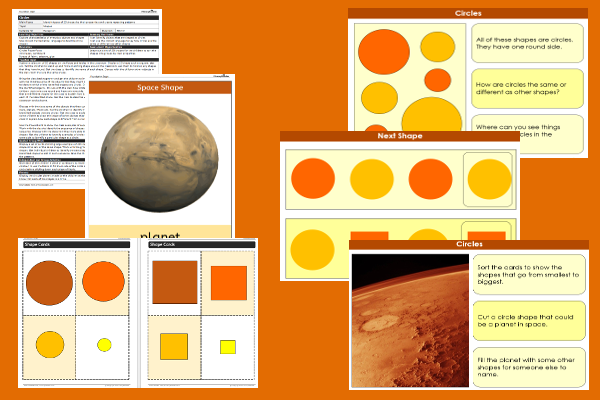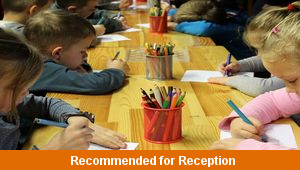Lesson Two – Circles

This numeracy teaching pack for the Foundation Stage gets the children to identify and describe different types of 2D shapes by their matching properties and create repeating patterns using circles and other shapes.
The class can produce a model of a planet showing some of the range of different circular shapes and objects that might be seen in this location as part of space.
Download this teaching pack including a lesson plan, classroom activities and an interactive presentation to teach the children to identify and describe different types of 2D shapes by their matching properties and create repeating patterns using circles and other shapes
Activities in this teaching pack include display posters to identify and describe some of the different circular shapes that can be seen in space and a set of cards to select and build different sequences of 2D shapes and identify the next shape in each set.
The interactive presentation gets the children to explore how to identify and describe different types of 2D shapes by their matching properties and create repeating patterns.
This lesson is part of a numeracy scheme of work to get the children to identify, describe and compare different 2D shapes by their individual shape properties including numbers of sides and corners. There are teaching activities for shared learning, differentiated worksheets to support independent learning and interactive presentations to introduce concepts and key skills.
-

Halving Things
Explain and model how to find and record the halves of some of the different objects that can be used at home and in school
-

School Friends
Identify and learn classroom routines and organisation by exploring and describing information and likes and dislikes for each of their classmates
-

Classroom
Identify the location and function of different objects used in the classroom and explore how to formulate rules to manage the classroom safely
-

Shape Patterns
Identify, describe and compare the sequences of geometric shapes that have been used to create a range of different patterns
